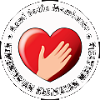Many people take pain relievers or painkillers when they are in pain. But do you know what pain is and how many types of pain relievers are available in our country? Let us check it out!
- It is not a disease but a symptom.
- It is Nature’s way of telling us that something is wrong.
- It can be caused by physical factors such as cuts, heat, falls, or diseases.
- It can also be caused by emotional factors such as stress from everyday living.
- Pain is picked up by nerve fibres at the site of injury.
- The pain signal is then sent on to the brain where it is registered as pain.
- At the same time, around the injury site, some chemicals called prostaglandins are released and can cause redness and swelling or inflammation.
There are different types of pain-relieving medicines that work in different ways and suit different type of pain. The effectiveness of pain relieving medicine depends on a number of things including:
- Matching the type of pain reliever to the type of pain
The form of pain reliever used. Some pain relievers are available in variety of different form including soluble tablets, mixtures, injections, creams, gels and patches.
How often the pain reliever is used – it is sometimes better to use pain relievers regularly, rather than on an ‘as needed’ basis. Ask a pharmacist or doctor for advice on the best way to use pain relievers.
A person age, medical condition(s) and other medicines – which may influence which type, form and dose of pain reliever is most suitable for them. Ask a doctor or a pharmacist for advice.
Narcotic Drugs
- Codeine, morphine
- Most effective analgesics and are used to treat the pain arising from surgery, serious injury and disease.
- Works in the brain to stop the signal from being detected by the brain.
- May produce euphoria which can lead to abuse and addiction – strictly control its use.
Non-Narcotic Drugs
- Aspirin, paracetamol, non-steroidal anti-inflammatory drugs (NSAIDs).
- Less powerful.
- Works on pain fibres at the site of injury to stop the pain message from being sent.
Drugs known as NSAIDs (e.g. ibuprofen, naproxen and mefenamic acid) stop the formation of prostaglandins and reduce inflammation.
Paracetamol
- Most famous painkillers available in the market.
- Relieves minor aches and pain that settle in a day or two.
- Reduces fever.
- Suitable for children in recommended doses.
- Good for people who cannot take Aspirin.
- One of the safest of all analgesics when taken correctly even in pregnancy and
- Breastfeeding mother because of small volume excreted in the milk.
- Does not usually irritate the stomach and allergic reactions are rare.
- An overdose can cause severe and possibly fatal liver and kidney damage.
Aspirin
- Also known as acetylsalicylic acid.
- Relieves minor aches and pain like muscle and joint pains, headache, nerve pain, pain from cuts and joint injury.
- Relieves period pain.
- Reduces fever.
- Reduces inflammation e.g. arthritic patient.
- Helps to prevent abnormal clotting of blood – decrease the chance of a stroke.
- Not suitable for people whose blood does not clot normally.
- Contraindicated for pregnant women, gout patient and those who are prone to stomach pain.
- Not suitable for children or teenagers.
- May worsen asthma.
NSAIDs
- E.g. Mefenamic acid, Ketoprofen, Indomethacin etc.
- Commonly used to reduce inflammation such as strains and arthritis.
- Also used to relieve period pain.
- Can cause stomach ulcers so do not use if you have ulcers unless under a close
- Supervision of your general practitioner. Take it with food or milk to avoid stomach discomfort.
- NSAIDs may make asthma worse.
- Most are not recommended during pregnancy or for nursing mother.
Codeine
- Used in combination with aspirin or paracetamol to improve pain relief.
- Also used to suppress cough.
- Can cause drowsiness, nausea, vomiting, constipation and depressed respiration.
Do not take pain relievers continuously for more than 3 days without seeing your medical practitioner. Usage of pain reliever with high dose continuously in long term can cause damage for kidney, liver and inner layer of gastrointestinal.
- Certain pain reliever use for continuous and long term can cause addiction
- Certain pain reliever can cause interaction with other medication. Ask your pharmacist or physician regarding this issue.
- Keep pain relievers out of reach of children.
- Take pain relievers after your meal to avoid stomach irritation.
- Always check the ingredients list when buying medicines to avoid ‘doubling up’ of the same drug.
- Do not take aspirin and Paracetamol together.
- Remember that pain can also be reduced by non-medicine means (e.g., hot/cold packs, physiotherapy, acupuncture, relaxation).
- Learn and practice relaxation technique to manage stress – especially if stress brings on pain such as headache
- Take pain relievers at the right time with the right dose to avoid poisoning or any toxic effects from the drugs.
- Alert your doctor, dentist and pharmacist if you are taking pain relievers regularly.
Acute pain is sharp pain that come on suddenly and lasts for a limited time period. It may be mild or severe and may last a few minutes, hours, days or weeks. Examples of acute pain include insect bites, headaches, burns and broken bones
When pain lasts for longer than three months, it is classed as chronic pain. It may be due to a chronic medical condition (e.g., arthritis or cancer), but sometimes the cause isn’t known. Occasionally, chronic pain may stem from an accident, infection or surgery that damages a nerve. This type of nerve pain is called neuropathic pain.





 DUTA KENALI UBAT ANDA
DUTA KENALI UBAT ANDA KENALI.UBAT.ANDA@MOH.GOV.MY
KENALI.UBAT.ANDA@MOH.GOV.MY




